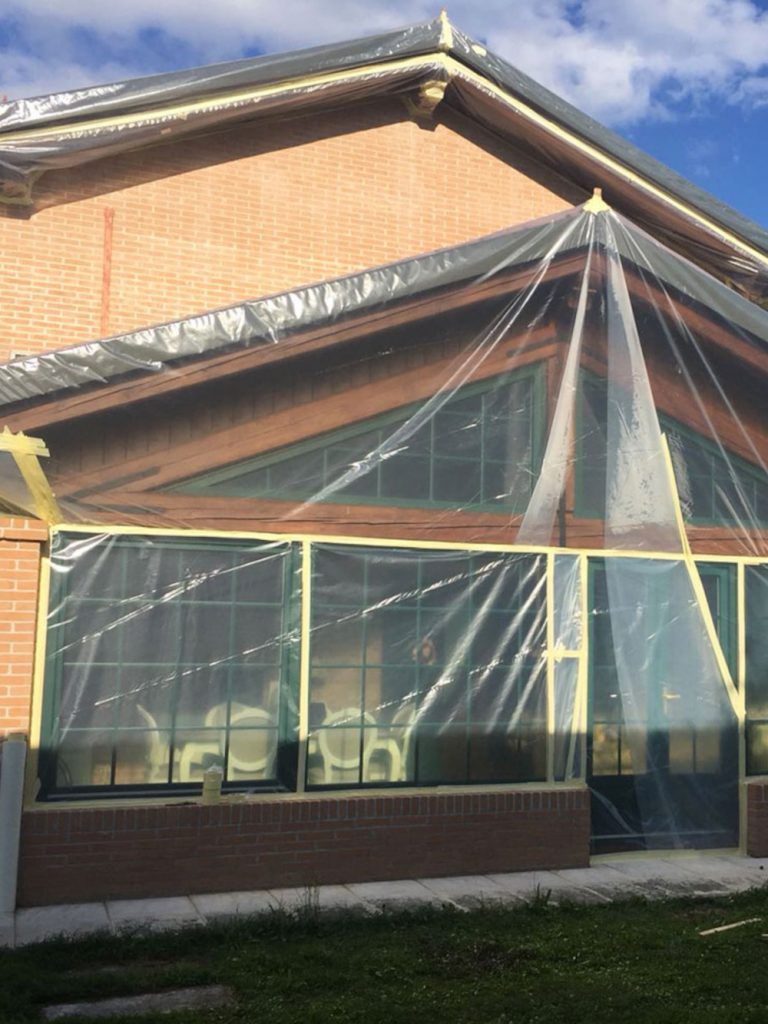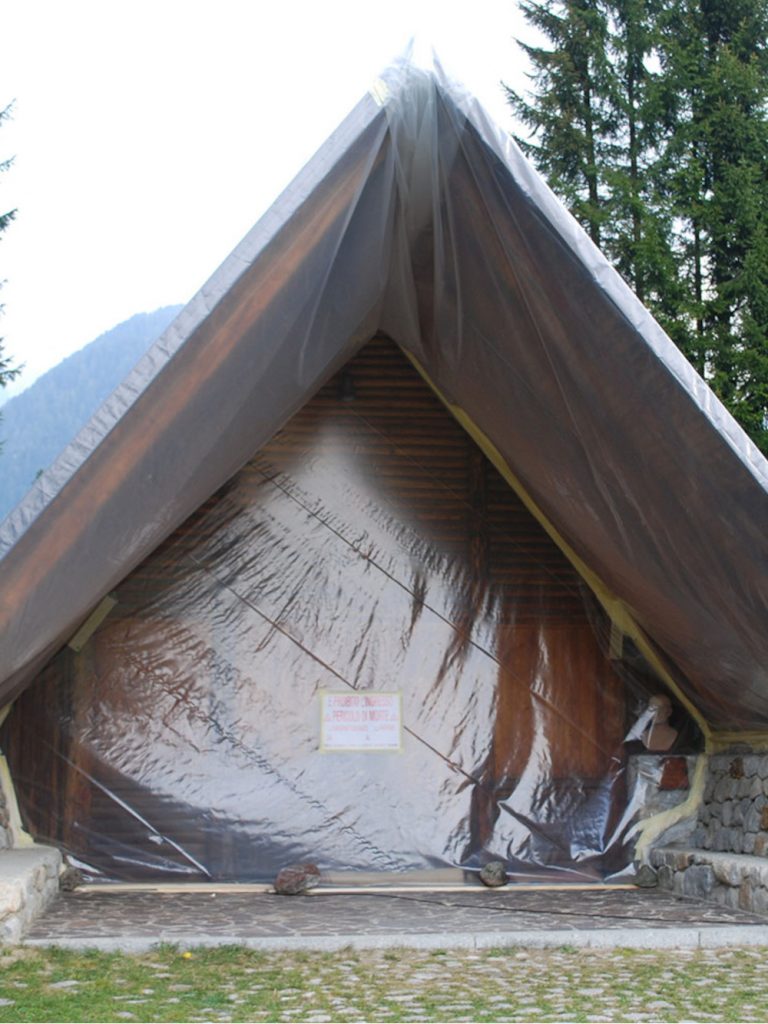Fumigations with Vikane

Vikane or sulfuryl fluoride is a fumigant gas used to control the main xylophagous insects. Drywood termites and other wood-destroying insects can cause significant damage as they feed on cellulose-containing materials found in structures, such as wood, paper, fabrics, furnishings, and artwork. Since these insects live most of their life cycle within their food source, the exact distribution and extent of infestation is often difficult to determine. Therefore, spot treatments, the use of physical methods or conventional insecticides may not eradicate all wood-destroying insects infesting a structure. Vikane was developed to be used only by professional fumigators for structural fumigations. Additionally, Vikane is also used to control bed bugs, cockroaches, moths, rodents, spiders, carpet beetles and other pests that infest the facility.
The sulfuryl fluoride gas, SO2F2, it is not flammable or corrosive and does not cause unwanted odours. Penetrates rapidly into structures and materials, is effective against a variety of pests that infest the structure, and dissipates rapidly on aeration. Such a fumigant can be used in different types of buildings including homes, hotels, churches, museums, historic monuments, rare book libraries, government, scientific and medical archives, research laboratories, ships, transportation vehicles and food handling facilities.
Vikane does not react with the building's furnishings or contents, including computers, electronics, and manufacturing equipment. That's why Vikane fumigation is an established method used to eradicate the parasites that infest delicate and rare preserved, biological and historical museum exhibits.
Vikane does not form toxic surface residues, therefore dishes, clothes, kitchen, utensils, equipment and other items should not be washed after fumigation with Vikane. Once the structure and the degree of infestation have been assessed, all openings to the outside (doors, windows, fireplaces) are sealed in order to contain the concentration of gas inside the premises. The dosage and exposure period of the fumigant will be calculated by specific apparatus. The exposure time can vary from 2 to 72 hours. When the exposure period is completed the technician will return to the facility to conduct the remediation procedure.
Curiosity
VIKANE AND THE ENVIRONMENT
When Vikane fumigant is aerated from a structure, it rapidly dissipates into the atmosphere due to its high vapor pressure. The relatively small amount of Vikane released and calculated, has virtually no impact on the atmosphere and global environment. Sulfuryl fluoride is fully oxidized and therefore not expected to interact with or contribute to local ozone formation, such as smog, due to its low reactivity in the atmosphere. The relative contribution of sulfuryl fluoride to acid rain is infinitesimally small compared to the massive amount of sulfuryl released into the atmosphere by industry. Sulfuryl fluoride does not contain chlorine or bromide and therefore cannot react to deplete stratospheric ozone by known mechanisms (Bailey 1992). Sulfuryl fluoride is not listed as a greenhouse gas under the Kyoto Protocol, an international treaty that regulates greenhouse gases. Recently published information suggests that compared to other sources of greenhouse gases, the potential contribution of sulfuryl fluoride is approximately one-hundredth of 1% (0.01%) of total contributions to global warming (Papadimitriou et al. 2008).

